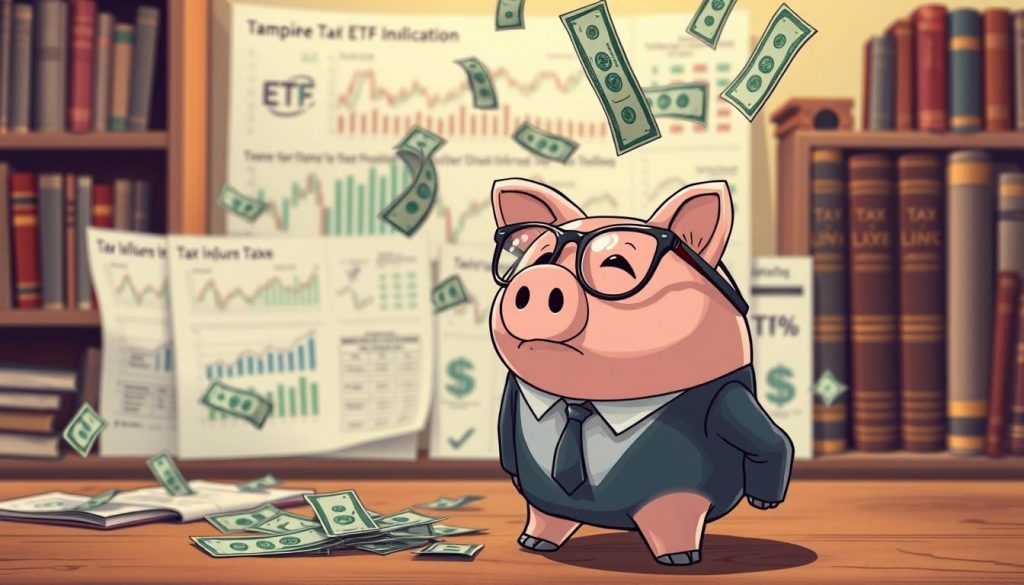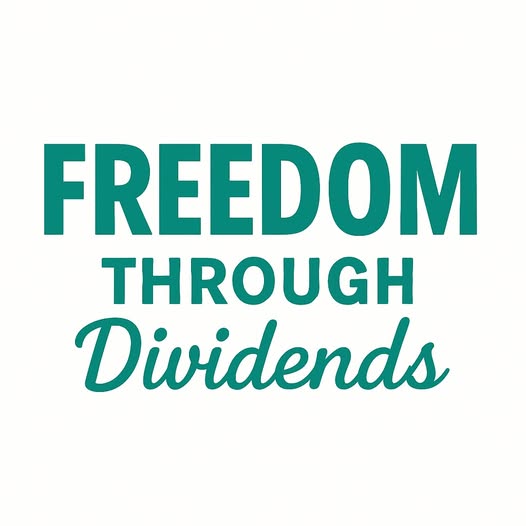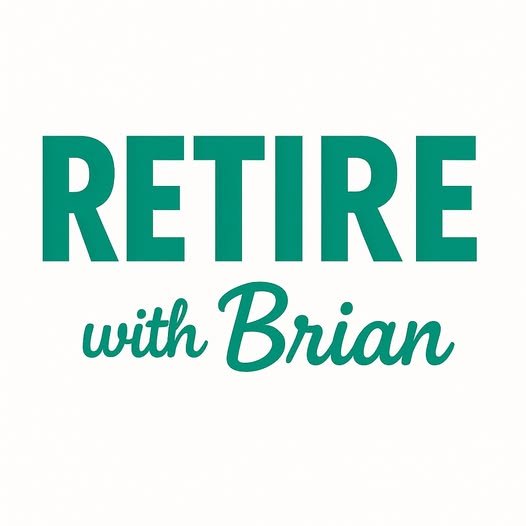Are you searching for a steady way to earn income without the hassle of managing your investments?
Investing in ETFs that pay out dividends consistently might be the answer. This approach can give you a stable flow of regular returns. It can also help you reach your financial goals over time.
Knowing how to boost your earnings through ETF dividends is key for those aiming to grow their wealth. It’s about picking the right ETFs, keeping an eye on their performance, and tweaking your strategy when needed.
Key Takeaways
- Investing in ETFs with a history of paying consistent dividends can provide a relatively stable source of income.
- A well-diversified ETF portfolio can help minimize risk and maximize returns.
- Regularly monitoring and adjusting your investment strategy is crucial for long-term success.
- Understanding the underlying assets and fees associated with ETFs is essential for making informed investment decisions.
- Maximizing returns through ETF dividends requires a combination of knowledge, patience, and the right investment strategy.
Understanding ETF Dividends as a Passive Income Source
For investors wanting a passive income, knowing about ETF dividends is key. ETF dividends are payments made by Exchange-Traded Funds (ETFs) to their investors. These payments usually come from the dividends of the stocks in the ETF.
What Are ETF Dividends?
ETF dividends are a share of the dividend income from the stocks in the ETF’s portfolio. This income is given to the ETF’s shareholders, offering a steady income. A financial expert notes,
“Dividends are a key component of total return for many investors, offering a relatively stable source of income in volatile markets.”
How ETF Dividends Generate Passive Income
ETF dividends create passive income by sharing a part of the dividends from the underlying stocks with shareholders. This way, investors can earn income without actively working or selling their investments. The beauty of ETF dividends lies in their ability to provide a relatively stable income stream.
The Compounding Power of Dividend Investing
The power of reinvesting ETF dividends can greatly increase long-term returns. When dividend payments are reinvested, they buy more shares. These shares can then earn more dividends, creating a snowball effect that can greatly increase an investor’s wealth over time.
The Benefits of Building Passive Income Through ETF Dividends
Investing in ETF dividends can add unique benefits to your portfolio. It’s key to know the perks of dividend ETFs when looking at passive income options.
Diversification Advantages
Dividend ETFs offer great diversification. They combine your money with others to invest in many stocks from different sectors. This mix can lower risk and boost the chance of steady returns over time. Dividend ETFs spread your investment across many assets, reducing risk from any one stock.
Lower Risk Compared to Individual Stocks
Stocks can be risky, with one company’s performance swinging wildly. But, dividend ETFs hold many stocks, smoothing out these swings. This reduced risk makes them a solid choice for stable passive income.
Accessibility for Beginning Investors
Dividend ETFs are great for new investors. They’re easy to start with, without the need to pick individual stocks or manage a big portfolio. With a dividend ETF, you can start earning passive income with a small investment, perfect for beginners.
Liquidity and Flexibility Benefits
Dividend ETFs also offer great liquidity and flexibility. They can be easily traded on major exchanges, letting you quickly adjust to market changes or personal financial shifts. This flexibility is key for those aiming to maximize their earning potential through dividend ETFs.
Understanding the benefits of ETF dividends can help you make better investment choices. It can lead to a more stable financial future.
Types of Dividend ETFs to Consider
To get the most from ETF dividends for passive income, it’s key to look at different dividend ETF types. These options cater to various investor needs and risk levels.
High-Yield Dividend ETFs
High-yield dividend ETFs focus on stocks with high dividend yields. They appeal to those seeking regular income. But, it’s important to check if these high yields are sustainable to avoid risks.
Dividend Growth ETFs
Dividend growth ETFs invest in companies that raise their dividends over time. They’re great for those wanting income now and growth in the future. This helps keep up with inflation.
International Dividend ETFs
International dividend ETFs offer exposure to dividend stocks from around the world. They diversify your portfolio and can tap into global growth.
Sector-Specific Dividend ETFs
Sector-specific dividend ETFs focus on certain industries like real estate or utilities. These are known for their dividend payments. They let investors target specific sectors that fit their strategies or income needs.
When picking a dividend ETF, think about your goals, risk level, and income needs. Here’s a quick guide to the main types of dividend ETFs:
| Type of Dividend ETF | Investment Focus | Potential Benefits |
|---|---|---|
| High-Yield | Stocks with above-average dividend yields | Higher current income |
| Dividend Growth | Companies with a history of increasing dividends | Potential for future dividend growth |
| International | Dividend-paying stocks in global markets | Diversification and global growth opportunities |
| Sector-Specific | Industries known for dividend payments | Targeted exposure to specific sectors |
Knowing about the various dividend ETF types helps you make choices that match your investment goals. This way, you can reach your passive income targets.
Top Dividend ETFs in the US Market
The US market has many dividend ETFs for passive income. Investors can pick from funds that fit their strategy and risk level.
Here are some top dividend ETFs in the US. They are known for stability and growth potential.
Vanguard Dividend Appreciation ETF (VIG)
The Vanguard Dividend Appreciation ETF (VIG) focuses on stocks with growing dividends. It has a low expense ratio and quality holdings. This makes it popular for long-term investors.
A financial expert says, “VIG is great for those wanting income and growth.”
“VIG’s focus on dividend growth is attractive for sustainable income.”
SPDR S&P Dividend ETF (SDY)
The SPDR S&P Dividend ETF (SDY) tracks the S&P 500 Dividend Aristocrats Index. It includes companies with 20+ years of dividend increases. This ensures reliable income for investors.
SDY is good for income-focused investors. It has a high dividend yield and low volatility. It’s a top choice for steady returns.
iShares Select Dividend ETF (DVY)
The iShares Select Dividend ETF (DVY) tracks the Morningstar Dividend Yield Focus Index. DVY has a high yield and low volatility. It’s great for conservative investors.
DVY’s portfolio is spread across sectors. This reduces risk for investors. It’s a key benefit for those looking to earn income while minimizing risk.
Schwab US Dividend Equity ETF (SCHD)
The Schwab US Dividend Equity ETF (SCHD) follows the Dow Jones US Dividend 100 Index. SCHD has a low expense ratio and quality dividend stocks. It’s a good choice for investors who want to save money.
SCHD balances dividend yield and growth. It shows the power of dividend ETFs in earning passive income.
How to Evaluate Dividend ETFs Before Investing
When looking at dividend ETFs, it’s important to do your homework. You want to make sure you’re choosing wisely. There are several key things to consider.
Understanding Yield Metrics
The dividend yield is a key number to look at. It shows how much income you can get from your investment. A higher yield might seem better, but remember, it can change.
It’s smart to look at the average yield over time. This helps you see the true potential of the ETF’s income.
Expense Ratio Considerations
The expense ratio is also crucial. It’s the cost of running the fund. A lower ratio means more of your money stays in your pocket.
When comparing ETFs, find ones with competitive expense ratios. Even a small difference can add up over time.
Analyzing Historical Performance
Historical performance gives clues about the future. It shows how the ETF has done in different times. This helps you understand its strength and growth potential.
Assessing Fund Holdings and Concentration
Knowing what’s in the ETF is important. Look for ones with a diversified portfolio. This spreads out the risk. A focused portfolio might offer more, but it’s riskier.
Here’s a comparison table of key metrics for popular dividend ETFs:
| ETF Name | Dividend Yield | Expense Ratio | 5-Year Average Return |
|---|---|---|---|
| Vanguard Dividend Appreciation ETF (VIG) | 1.8% | 0.08% | 10.2% |
| SPDR S&P Dividend ETF (SDY) | 2.9% | 0.35% | 9.5% |
| iShares Select Dividend ETF (DVY) | 3.2% | 0.38% | 9.1% |
By carefully looking at these factors and using tools like the comparison table, you can make a better choice. This helps you pick the right dividend ETF for your portfolio.
Setting Up Your ETF Dividend Investment Plan

Starting your journey to earn passive income with ETF dividends is exciting. A solid investment plan is key. It guides your choices and helps you reach your financial targets.
Determining Your Investment Goals
First, decide what you want from your investments. Do you want regular income, growth, or both? Clear goals are crucial for making smart choices and aligning your strategy with your dreams.
Choosing the Right Brokerage Account
Finding the right brokerage account is important. Look at fees, minimums, and the ETFs they offer. Choose brokerages with good prices and tools to help you invest wisely.
Creating a Budget for Regular Investments
Creating a budget for regular investments is essential. Decide how much you can invest each month or quarter. Set up a plan to make investing automatic.
Setting Realistic Income Expectations
It’s important to have realistic income hopes from ETF dividends. Remember, income can change and past results don’t predict the future. Setting realistic goals helps you avoid disappointment and make better choices.
Step-by-Step Guide to Purchasing Dividend ETFs
Buying dividend ETFs is easy and can be broken down into simple steps. First, you need to know how to research and buy them. Then, you’ll learn how to keep your investments going.
Researching Available Options
Start by looking at the yield, expense ratio, and past performance of dividend ETFs. Use online tools and financial websites to compare them.
| ETF Name | Yield | Expense Ratio |
|---|---|---|
| Vanguard Dividend Appreciation ETF (VIG) | 1.8% | 0.08% |
| SPDR S&P Dividend ETF (SDY) | 2.8% | 0.35% |
Executing Your First Purchase
To buy your first ETF, open a brokerage account if you don’t have one. Pick a reputable online broker with low fees and an easy-to-use platform.
After setting up your account, find the ETF you want. Enter how many shares you want to buy and complete the trade.
Setting Up Dividend Reinvestment Plans (DRIPs)
Many brokers offer Dividend Reinvestment Plans (DRIPs). These plans automatically reinvest your dividends. This can help your investments grow over time.
“The power of compounding is a significant advantage for long-term investors. By reinvesting dividends, investors can potentially earn returns on their returns, leading to substantial growth in their investment portfolios over time.”
Automating Your Investment Process
Automating your investments helps you stick to a regular schedule. Most brokers let you set up automatic transfers from your bank to your brokerage account.
Automating your investments can also help with dollar-cost averaging. This method can reduce the effect of market ups and downs on your investments.
Strategies to Maximize Passive Income Through ETF Dividends
To boost passive income from ETF dividends, it’s crucial to know and use key strategies. As an investor, you want to increase your returns and have a steady income. The right tactics can help you achieve your financial goals.
Dollar-Cost Averaging Approach
The dollar-cost averaging method is a smart way to boost passive income. It means investing a set amount regularly, no matter the market’s state. This approach helps you manage market ups and downs and lowers your average cost over time. It ensures a steady income, as you’re not trying to guess the market.
Building a Dividend ETF Ladder
Building a dividend ETF ladder is another effective strategy. It involves investing in ETFs with different dividend schedules. This way, you get income all year round, as different ETFs pay dividends at different times. A ladder helps you have a steady income and not rely on just one ETF.
Combining Growth and Income ETFs
Combining growth and income ETFs can balance your portfolio and increase passive income. Growth ETFs aim for capital growth, while income ETFs focus on dividends. By mixing both, you can enjoy growth potential and regular income.
Reinvestment Strategies for Compounding Returns
Reinvesting dividends is a great way to grow your returns over time. A dividend reinvestment plan (DRIP) automatically reinvests your dividends, buying more shares. This can greatly increase your passive income in the long run.
| Strategy | Description | Benefits |
|---|---|---|
| Dollar-Cost Averaging | Investing a fixed amount regularly | Reduces market volatility impact, lowers average cost per share |
| Dividend ETF Ladder | Investing in ETFs with different payout schedules | Provides regular income throughout the year |
| Combining Growth and Income ETFs | Balancing portfolio with growth and income ETFs | Balances growth potential with regular income |
| Reinvestment Strategies | Reinvesting dividend payments | Compounds returns over time, increases future income potential |
By using these strategies, you can increase your passive income from ETF dividends. It’s important to match your strategies with your financial goals and risk level. This will help you build a strong investment portfolio.
Tax Considerations for ETF Dividend Income

Investing in ETF dividends can be rewarding, but knowing about taxes is key. These dividends offer a steady flow of income. Yet, it’s important to understand taxes to get the most from your investment.
Qualified vs. Non-Qualified Dividends
The tax on ETF dividends varies based on their type. Qualified dividends are taxed at a lower rate, often 0%, 15%, or 20%. They must meet certain holding period rules and come from U.S. or qualified foreign corporations.
Tax-Advantaged Accounts
Using tax-advantaged accounts like IRAs or 401(k)s can lower your tax bill. These accounts grow tax-free until you withdraw the money.
Tax-Loss Harvesting Strategies
Tax-loss harvesting is a smart move. It involves selling losing stocks to offset gains. This can help reduce your taxes on ETF dividends.
State Tax Implications
Don’t forget about state tax implications for your ETF dividends. Some states tax dividends, while others don’t. Knowing your state’s rules can guide your investments.
Grasping these tax points can help you manage your ETF dividend investments better. This way, you can increase your passive income from ETF dividends.
- Regularly review your portfolio to keep taxes low.
- Seek advice from a tax expert to understand laws.
- Use tax-advantaged accounts to cut down on taxes.
Common Mistakes to Avoid When Investing in Dividend ETFs
When you explore dividend ETFs, knowing common mistakes is key. These investments can help you earn passive income. But, they need careful thought and planning.
Chasing Yield Without Considering Quality
Many investors focus too much on yield. High yields might hide problems like falling stock prices or unsustainable dividends. It’s important to check the ETF’s quality, its dividend history, and the health of the companies it holds.
Ignoring Expense Ratios
Expense ratios can affect your returns over time. Even small differences can add up. Always compare these ratios to find the best balance between cost and performance.
Neglecting Portfolio Rebalancing
Markets change, and so does your portfolio. Regular rebalancing keeps it in line with your goals. This means checking and adjusting your ETF holdings as needed.
Failing to Account for Inflation
Inflation can reduce the value of your dividend income. Look for ETFs with a history of dividend growth. This can help keep your income ahead of inflation.
Overlooking International Dividend Opportunities
Sticking to your home country can mean missing out. International ETFs offer a wider range of companies and sectors. This can make your portfolio stronger and more profitable.
Here’s a comparison of different dividend ETFs:
| ETF Name | Expense Ratio | Dividend Yield | 1-Year Return |
|---|---|---|---|
| Vanguard Dividend Appreciation ETF (VIG) | 0.08% | 1.86% | 10.23% |
| SPDR S&P Dividend ETF (SDY) | 0.35% | 2.93% | 8.15% |
| iShares Select Dividend ETF (DVY) | 0.38% | 3.13% | 7.56% |
Conclusion: Building Long-Term Wealth Through ETF Dividends
ETF dividends can help you earn passive income, which is great for building wealth over time. By learning about dividend ETFs, you can build a portfolio that gives you steady income. This is a smart way to make money without much effort.
To get the most from ETF dividends, try dollar-cost averaging and dividend reinvestment plans. These methods help you deal with market ups and downs. They also let you grow your money faster through dividend investing.
Keep checking on your ETF dividend investments. Look at things like yield, fees, and past performance. With the right knowledge, you can reach your financial goals using ETF dividends.
FAQ
What are the benefits of investing in dividend ETFs for passive income?
Investing in dividend ETFs can help you build a diversified portfolio. This reduces risk and may lead to stable returns. They offer a steady income stream and are often less volatile than single stocks.
How do I choose the right dividend ETF for my investment goals?
To pick the right dividend ETF, look at its yield, expense ratio, and past performance. Also, consider the stocks it holds. Match your choice with your investment goals, risk level, and how long you plan to hold the investment.
What is the difference between high-yield and dividend growth ETFs?
High-yield dividend ETFs focus on stocks with high dividend yields, giving you immediate income. Dividend growth ETFs invest in companies that increase their dividend payouts over time. They offer potential for long-term growth.
Can I automate my dividend ETF investments?
Yes, you can automate your dividend ETF investments. Set up a regular investment plan through your brokerage account. Many brokerages also offer dividend reinvestment plans (DRIPs) to automatically reinvest your dividends.
How do tax considerations impact my dividend ETF investments?
Taxes on dividend ETF investments depend on the type of dividends and the accounts used. Knowing this can help reduce taxes and increase your after-tax returns.
What are some common mistakes to avoid when investing in dividend ETFs?
Common mistakes include focusing too much on high yields without checking the stock quality. Also, ignore expense ratios and don’t rebalance your portfolio. Don’t forget about inflation and international dividend opportunities.
How can I maximize my passive income through ETF dividends?
To boost your passive income, try dollar-cost averaging and building a dividend ETF ladder. Mix growth and income ETFs. Use reinvestment strategies to compound your returns.
Are dividend ETFs suitable for beginner investors?
Yes, dividend ETFs are great for beginners. They offer diversification, lower risk, and easy access. They’re a simple way to start investing in the stock market.

